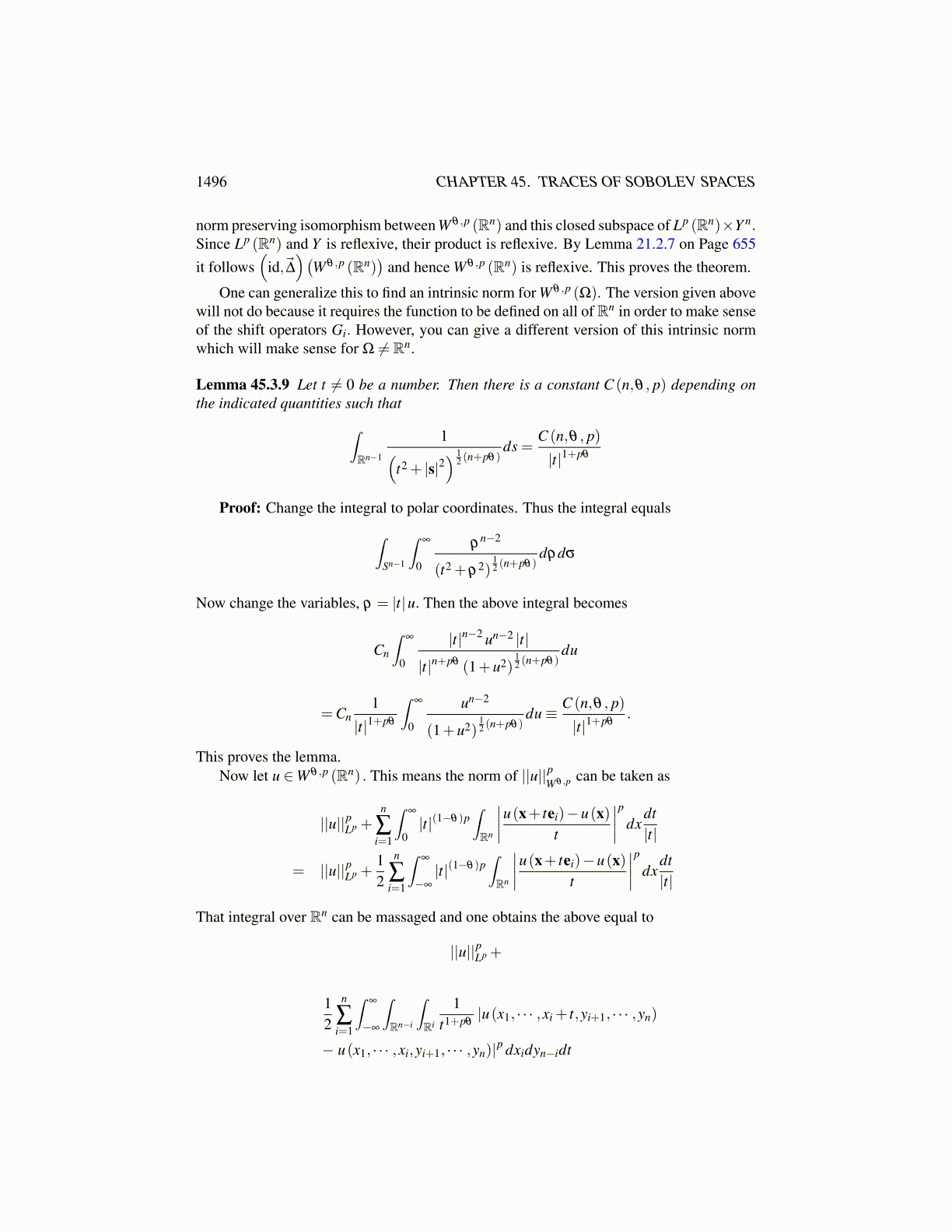
1496 CHAPTER 45. TRACES OF SOBOLEV SPACES
= ||u||pLp(Rn)+
n
∑i=1
∫∞
0t(1−θ)p
∣∣∣∣∣∣∣∣u(·+ tei)−u(·)t
∣∣∣∣∣∣∣∣pLp
dtt
(45.3.13)
and u ∈W θ ,p (Rn) when this norm is finite. The only new detail is that in showing that foru ∈ T0 it follows it is in T, you use the function
f (t)≡ φ (t)1tn
∫ t
0· · ·∫ t
0G1 (τ1)G2 (τ2) · · ·Gn (τn)udτ1 · · ·dτn
and the fact that these semigroups commute. To get this started, note that
g(t)≡∫ t
0· · ·∫ t
0G1 (τ1)G2 (τ2) · · ·Gn (τn)udτ1 · · ·dτn ∈ D(Λi)
for each i. This follows from writing it as∫ t
0Gi (τ i)(wi)dτ i
for wi ∈ Lp coming from the other integrals and then repeating the earlier argument to get
Λig(t) = Gi (t)wi−wi
and then ∫∞
0t p(1−θ) ||Λi f ||pLp
dtt
≤∫
∞
0t p(1−θ)
∣∣∣∣∣∣∣∣Gi (t)wi−wi
t
∣∣∣∣∣∣∣∣pLp
dtt
≤ C∫
∞
0t p(1−θ)
∣∣∣∣∣∣∣∣Gi (t)u−ut
∣∣∣∣∣∣∣∣pLp
dtt≤C ||u||pT0
Thus all is well as far as f is concerned and the proof will work as it did earlier in Theorem45.3.6. What about f ′? As before, the only term which is problematic is
φ (t)(
1tn
∫ t
0· · ·∫ t
0G1 (τ1)G2 (τ2) · · ·Gn (τn)udτ1 · · ·dτn
)′After enough massaging, it becomes
n
∑i=1
∏j ̸=i
1t
∫ t
0G j (τ j)dτ j
1t2
∫ t
0(Gi (t)u−Gi (τ i)u)dτ i
where the operator ∑ni=1 ∏ j ̸=i
1t∫ t
0 G j (τ j)dτ j is bounded. Thus similar arguments to thoseof Theorem 45.3.6 will work, the only difference being a sum.